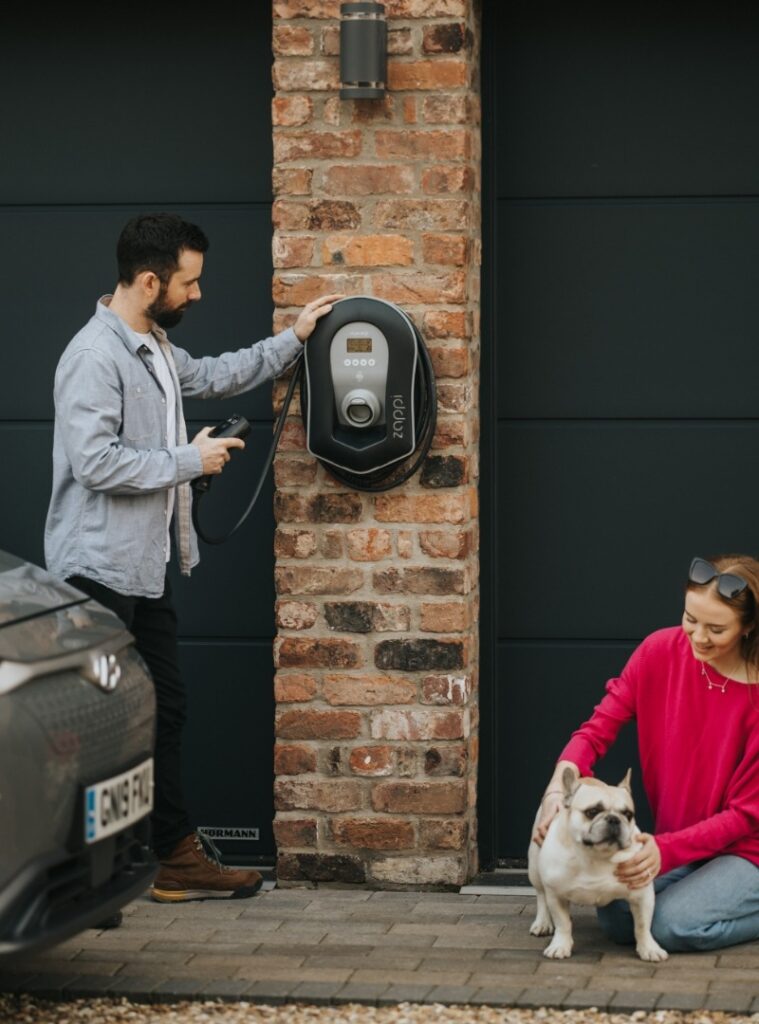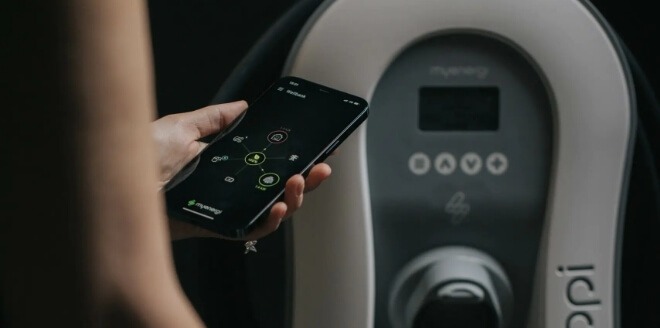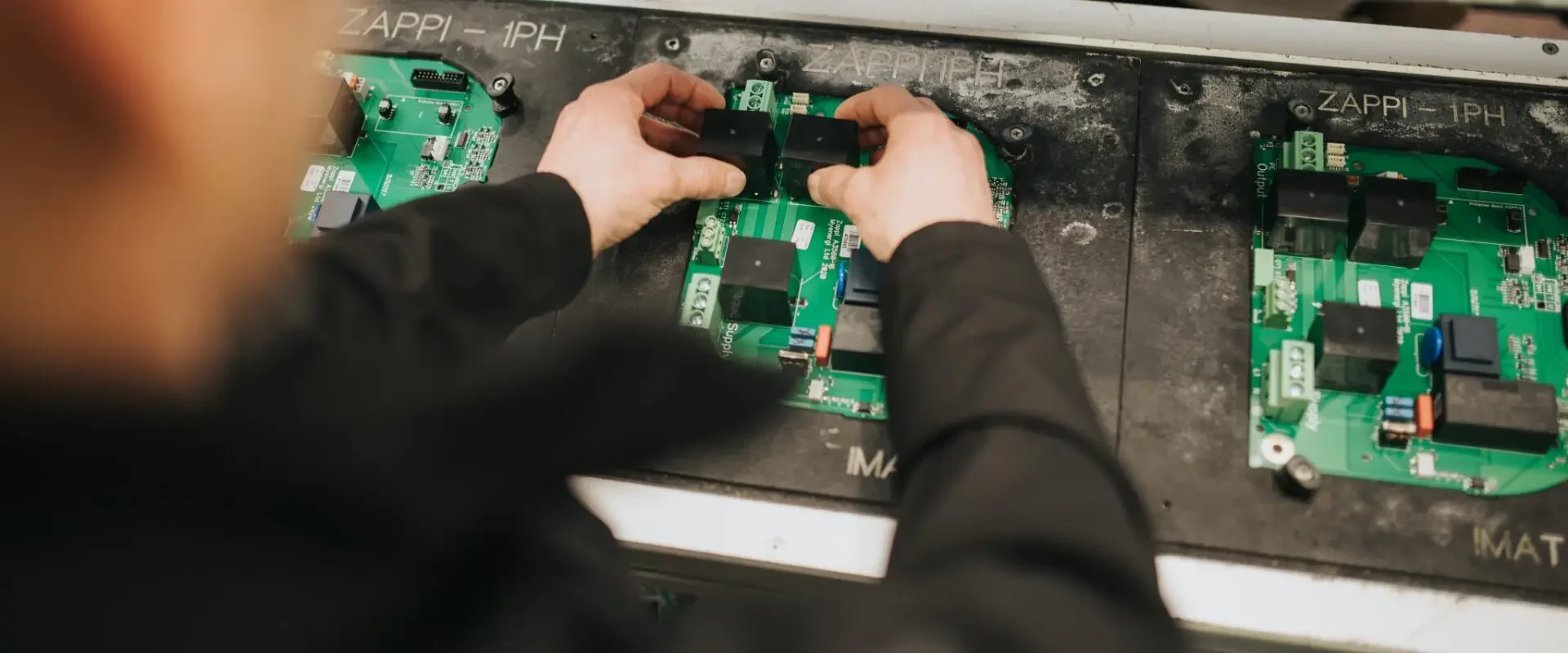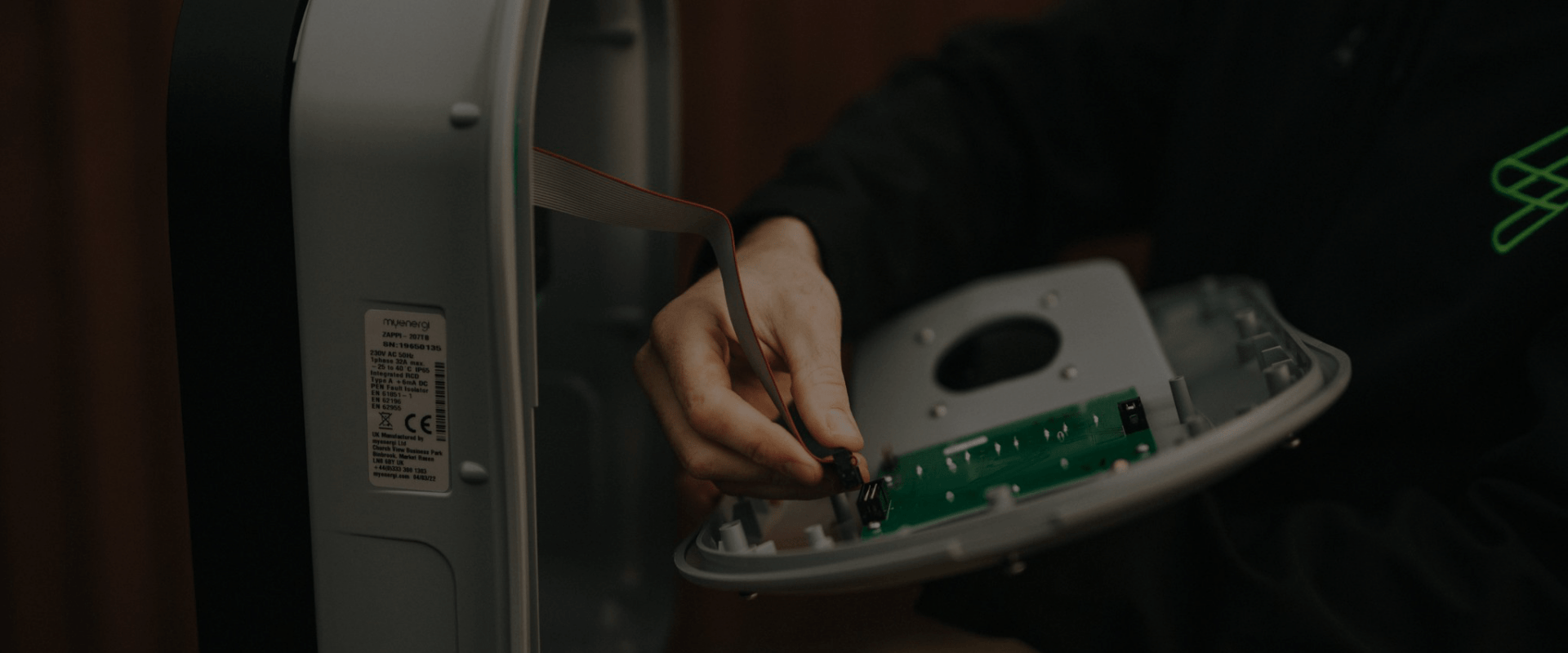
Smart EV charger
Charge your EV with power from the grid, solar or bothIf you choose zappi you are ready for the future!
zappi is a smart EV charger with a unique feature: it functions both as a standard car charger with power from the grid and with 100% green energy from your own solar panels or wind turbine.
With zappi, you increase the return on your investment in solar panels and electric car, and you can charge your EV for free at home! zappi is easy to install and user-friendly. Even if you don't have solar panels, zappi still works like a standard car charger that uses power from the grid.
Choose zappi
More choice. More control. Meet OCPP.
zappi now complies with OCPP regulations by default.
This means you can connect to any OCPP-compatible platform, allowing you to control and manage your charging experience.
What is OCPP?
OCPP is a standardized form of communication for EV charging infrastructure, regardless of manufacturer. It is designed to enable compatibility between EV chargers and management software to provide greater convenience and choice for consumers.
What are the benefits?
OCPP offers 4 main benefits for zappi users, which are slightly different depending on whether you have a single zappi at home or use multiple zappis in a business environment:

Check
Set a PIN to control who has access to your Zappi.

Select
Select the default charging mode (Fast, Eco, Eco+) when a charging session is started.

Maintain
Keep track of who, when and how much is charged using zappi, ideal for business mileage tracking.

Connect
Connect to any OCPP-compatible platform.

Should I pay or upgrade?
OCPP is a free, open-source protocol. You only need to update your zappi's firmware to use it.
Don't know how to upgrade?
If you have never updated your zappi before and don't know how to do so, you can find manuals on the product support pages under the "Downloads" heading. These can help you install the latest version of the firmware step by step.
Watch our instructional video

#1 solar charger
With or without solar panels, zappi charges your car!Ready for the future with the zappi home charger.
zappi offers charging tailored to your lifestyle and needs. Whether you need a quick charging session, or prefer to charge using 100% renewable energy, or a combination of both, zappi gives you the flexibility to charge your way.
The eco-charging mode combines green energy with energy taken from the grid. This mode minimizes the use of grid power, typically taking advantage of lower rates during the night, but it also allows charging with 100% green energy. This allows you to charge your car for free! Charging power is constantly adjusted to changes in electricity generation or power consumption elsewhere in the home.
If the excess power generated falls below 1.4 kW, power from the grid is used to replenish it.
"Eco+" charging is very similar to "eco" charging in that it can use power from the grid or your own energy source. However, charging power is constantly adjusted based on changes in power generation or power consumption elsewhere in the home. Charging your electric car is interrupted if too much power is input and only continues when there is a surplus of available free power.
In fast mode, your vehicle is charged with maximum power. This power can come from a renewable energy source or simply from the grid. The cost of charging an electric car also depends on several factors, including the mode and type of car.
If you don't have solar panels or wind power generation, zappi charges in the same way as a standard mode 3 charge point.

Get a grip on your own power
zappi uses your self-generated power to charge EVs
zappi uses self-generated power to charge EVs.
A solar-powered EV charger allows you to harness excess solar energy to provide power to your car. To generate solar energy, you need to install solar photovoltaic (PV) panels on your home or workplace. However, the energy produced by the solar panels is completely free, effectively giving you free mileage!
The sun's light energy is called photon. This is the most fundamental particle of all light. It is these photons in natural daylight that are converted into electricity by solar panels. This small beam of electromagnetic energy is constantly moving. Simply put, a solar panel works by colliding photons, or particles of light, with electrons, which detach them from atoms, generating a stream of electricity.
Our eco-smart technology makes intelligent decisions based on your self-generated power and the energy tariff you subscribe to. This allows your myenergi devices to be optimized to use energy from the grid at the lowest possible rate per kWh.

Charging your vehicle safely
All safety standards exceeded
Safety is a top priority. Every myenergi product is designed to the highest possible energy efficiency standards, but we place equal importance on safety.
Of course we adhere to all safety standards in the industry, but we like to go a step further to always provide our installers and users with the safest possible experience. That's why we were the first to introduce the PEN fault test, even before other manufacturers did.
View our EV charger FAQs
Yes, you can use your zappi EV charger to charge your car without solar power. Then it simply uses power from the grid and charges your car as with a conventional electric car charger. With the added benefit of being ready for solar charging if you purchase solar panels in the future!
After an initial investment in green technology, you will save on your bills in the long run by becoming more sustainable.
The time it takes to charge your EV is not so black and white and depends on several factors, such as the vehicle, battery size and charger type. However, the average charging time for an EV is about 7 hours and 42 minutes when using a standard (non-rapid) charger.
The time it takes to charge your EV using solar panels depends on several factors, including the number of solar panels. On average, a single panel will generate about 2 kWh per day. So if you have multiple panels, the power generated will increase.
The cost of charging your EV depends on several factors. If you use solar panels, you can charge your EV for free. On the other hand, if you pay to charge your EV at a gas station, for example, they will set their own rate based on the changing cost of energy at the time. At home, you can usually charge more cheaply by plugging in your electric car at night instead of during the day. In addition, you can select different charging levels, which makes the cost variable.

 EV charging
EV charging Manage your energy
Manage your energy Maximize your energy
Maximize your energy Monitor your energy
Monitor your energy Find an installer
Find an installer Business charging station
Business charging station Pair zappi with a management platform
Pair zappi with a management platform









